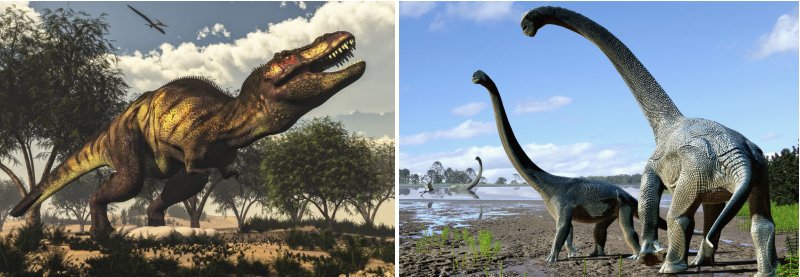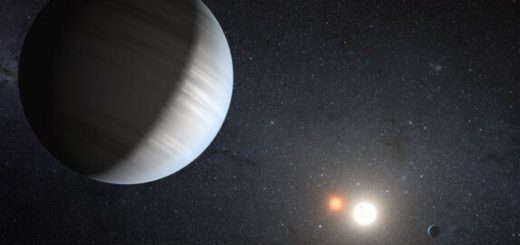Rare Giant Dinosaur Footprints Discovered On The Isle Of Skye, Scotland
Dozens of giant footprints discovered on the coast of Isle of Skye, Scotland is rare evidence of the Middle Jurassic period, from which few dinosaur fossil sites have been found around the world.
The tracks – made some 170 million years ago – belonged to long-necked sauropods – which stood up to two meters tall – and by similarly sized theropods, which were the older cousins of Tyrannosaurus rex.

Most of the prints were made by long-necked sauropods – which stood up to two metres tall – and by similarly sized theropods, which were the older cousins of Tyrannosaurus rex.
Researchers used drone photographs to make a map of the site, measured, photographed and analyzed about 50 footprints in a tidal area at Brothers’ Point – Rubha nam Brathairean – a dramatic headland on Skye’s Trotternish peninsula.
“This tracksite is the second discovery of sauropod footprints on Skye. It was found in rocks that were slightly older than those previously found at Duntulm on the island and demonstrates the presence of sauropods in this part of the world through a longer timescale than previously known,” Paige dePolo, who led the study, conducted the research while an inaugural student in the University’s Research Master’s degree programme in palaeontology and geobiology, said in a press release.
“This site is a useful building block for us to continue fleshing out a picture of what dinosaurs were like on Skye in the Middle Jurassic.”
The footprints were difficult to study owing to tidal conditions, the impact of weathering and changes to the landscape. In spite of this, scientists identified two trackways in addition to many isolated foot prints.
.”The more we look on the Isle of Skye, the more dinosaur footprints we find,” said Dr Steve Brusatte of the University of Edinburgh’s School of GeoSciences, who led the field team.
This new site records two different types of dinosaurs–long-necked cousins of Brontosaurus and sharp-toothed cousins of T. rex–hanging around a shallow lagoon, back when Scotland was much warmer and dinosaurs were beginning their march to global dominance.”



 Creators of mankind
Creators of mankind Description of “Tall white aliens”
Description of “Tall white aliens” Where they came from?
Where they came from? About hostile civilizations
About hostile civilizations The war for the Earth
The war for the Earth “Tall white aliens” about eternal life
“Tall white aliens” about eternal life Video: “Nordic aliens”
Video: “Nordic aliens” Aliens
Aliens Alien encounters
Alien encounters The aliens base
The aliens base UFO
UFO Technology UFO
Technology UFO Underground civilization
Underground civilization Ancient alien artifacts
Ancient alien artifacts Military and UFO
Military and UFO Mysteries and hypotheses
Mysteries and hypotheses Scientific facts
Scientific facts


















